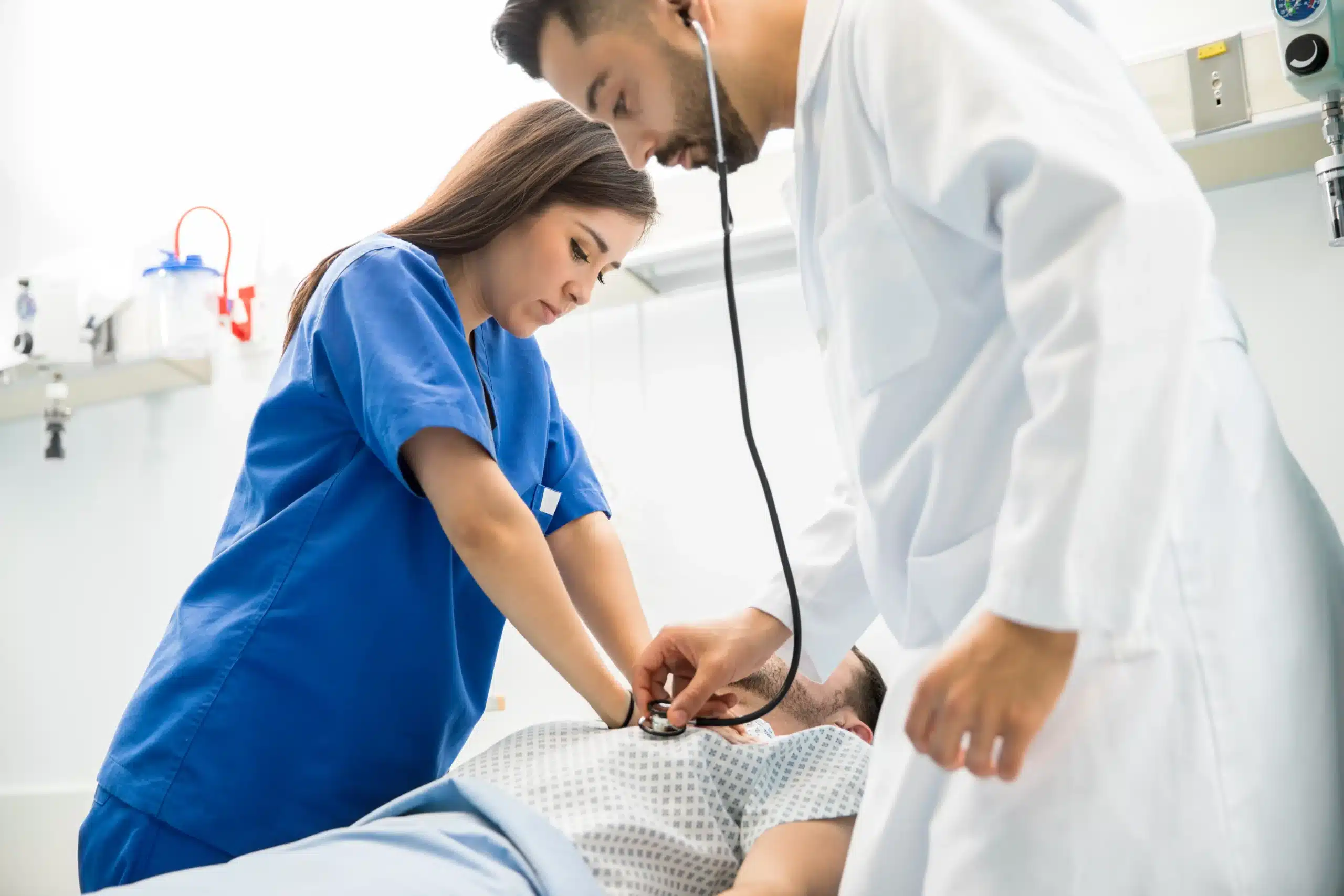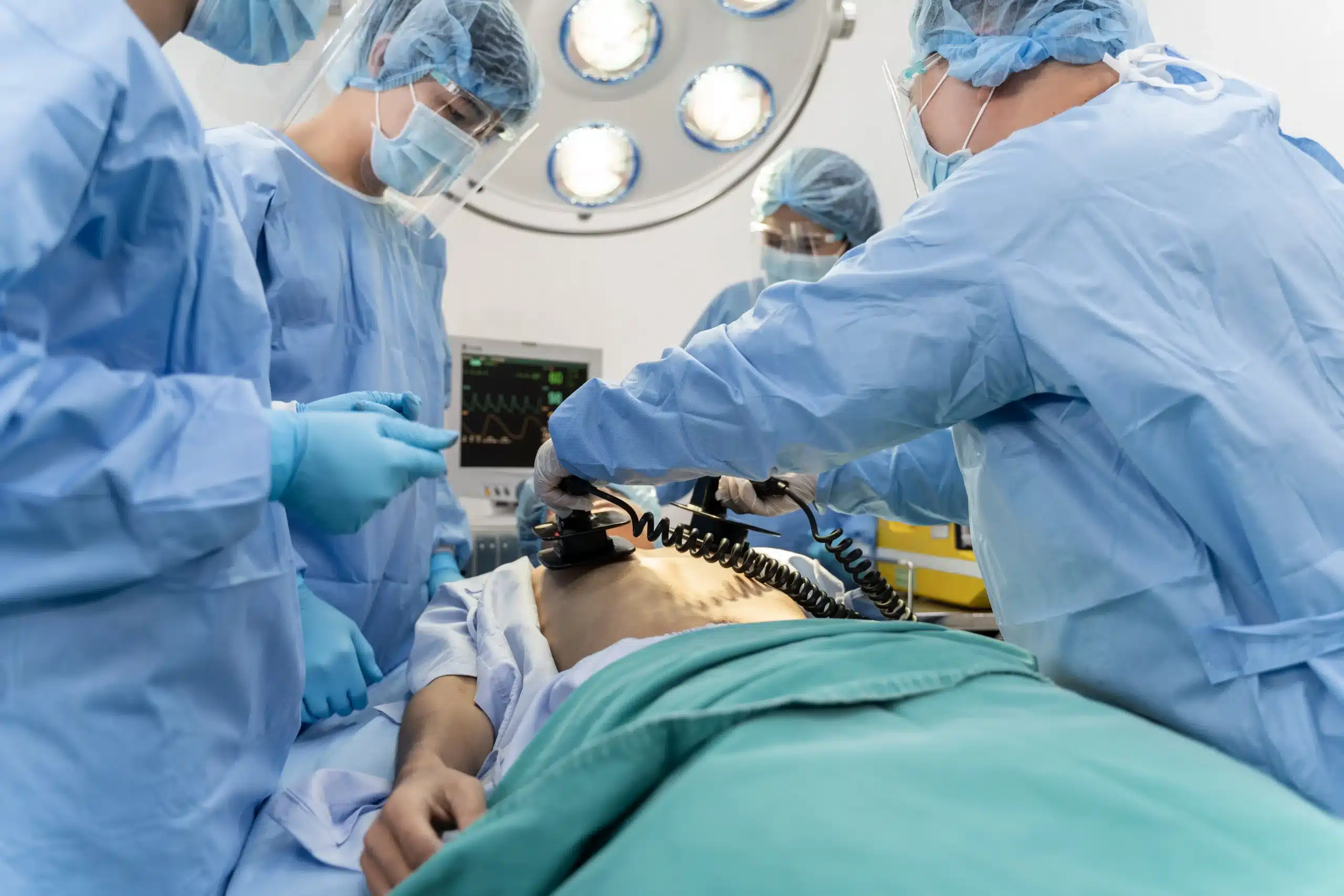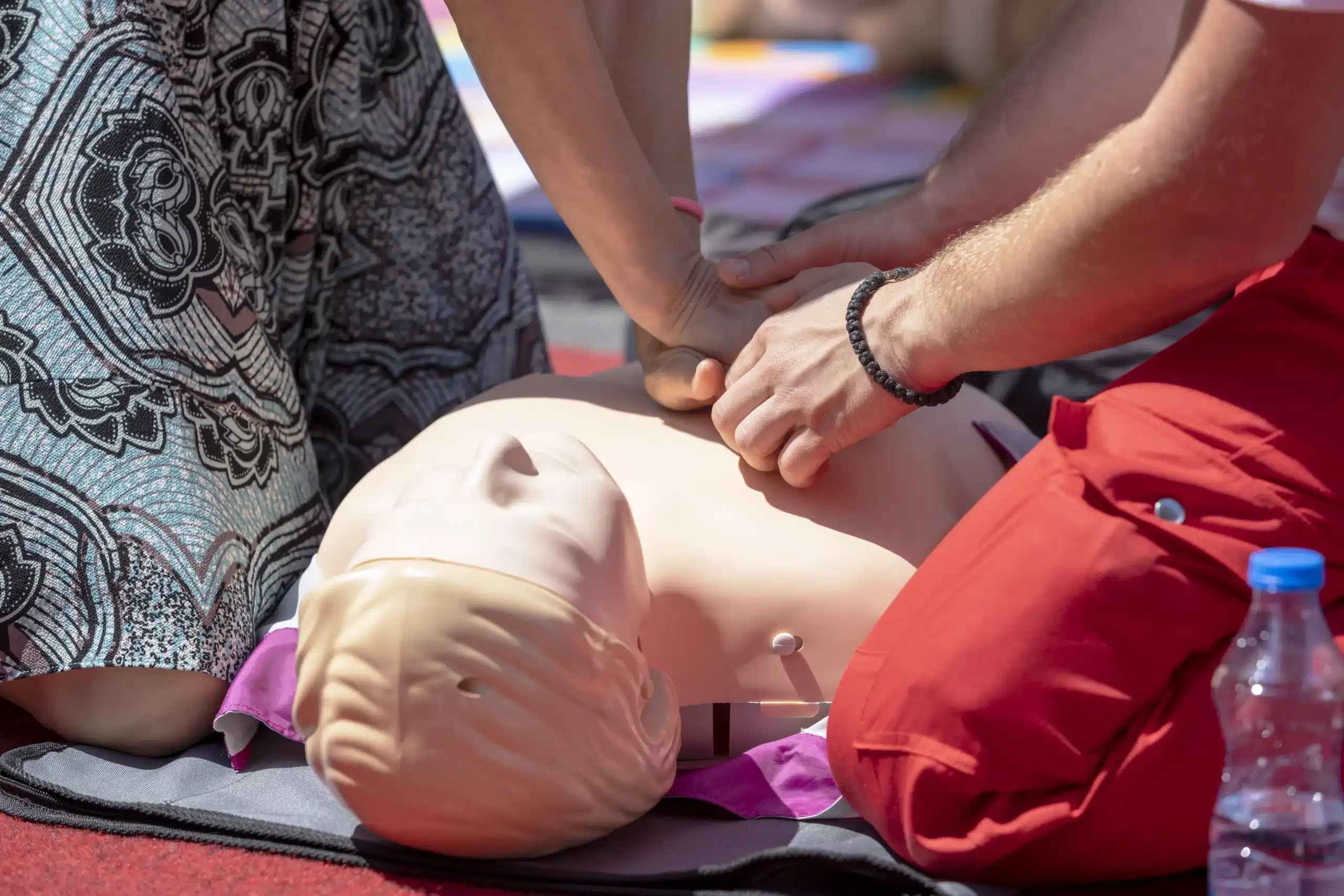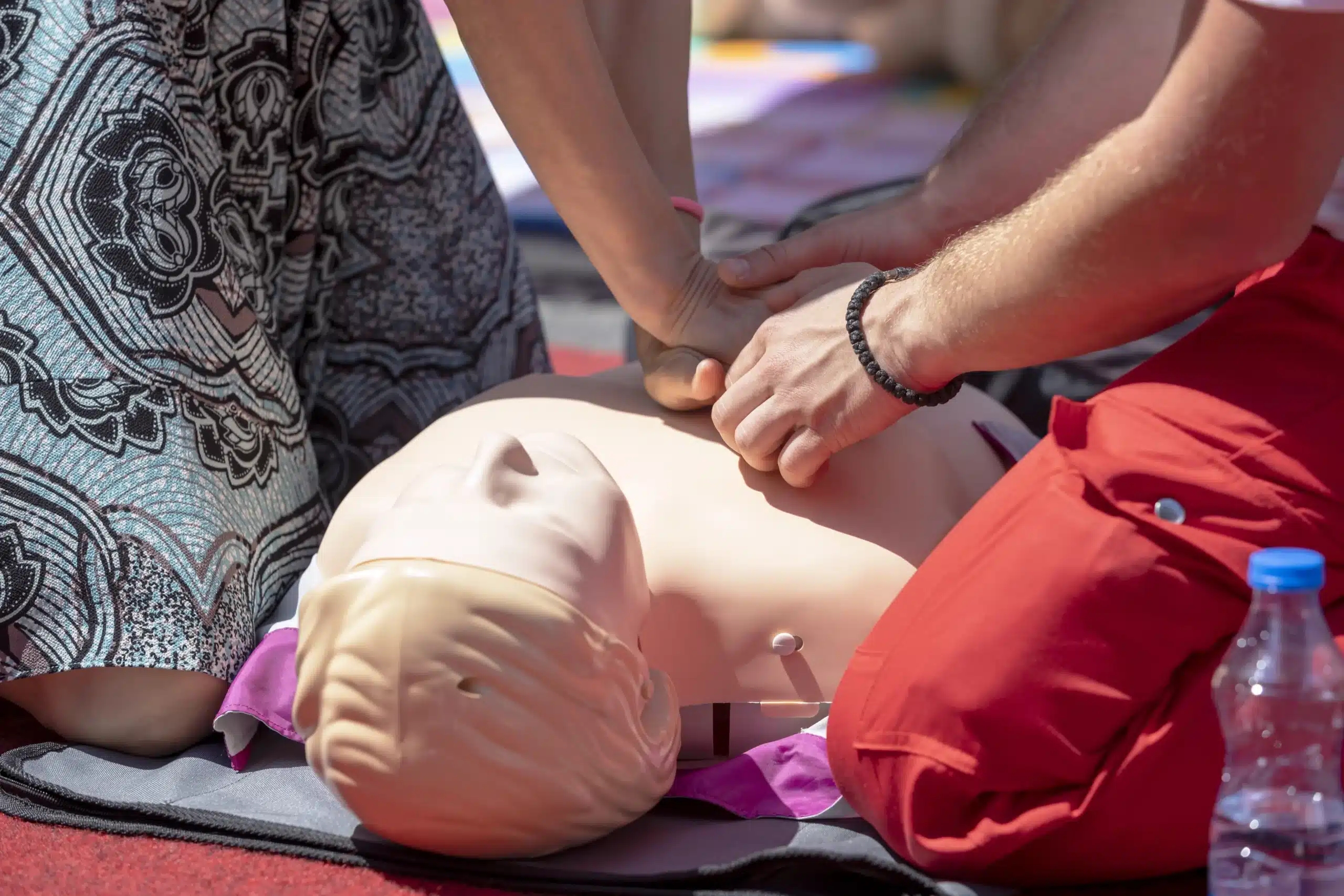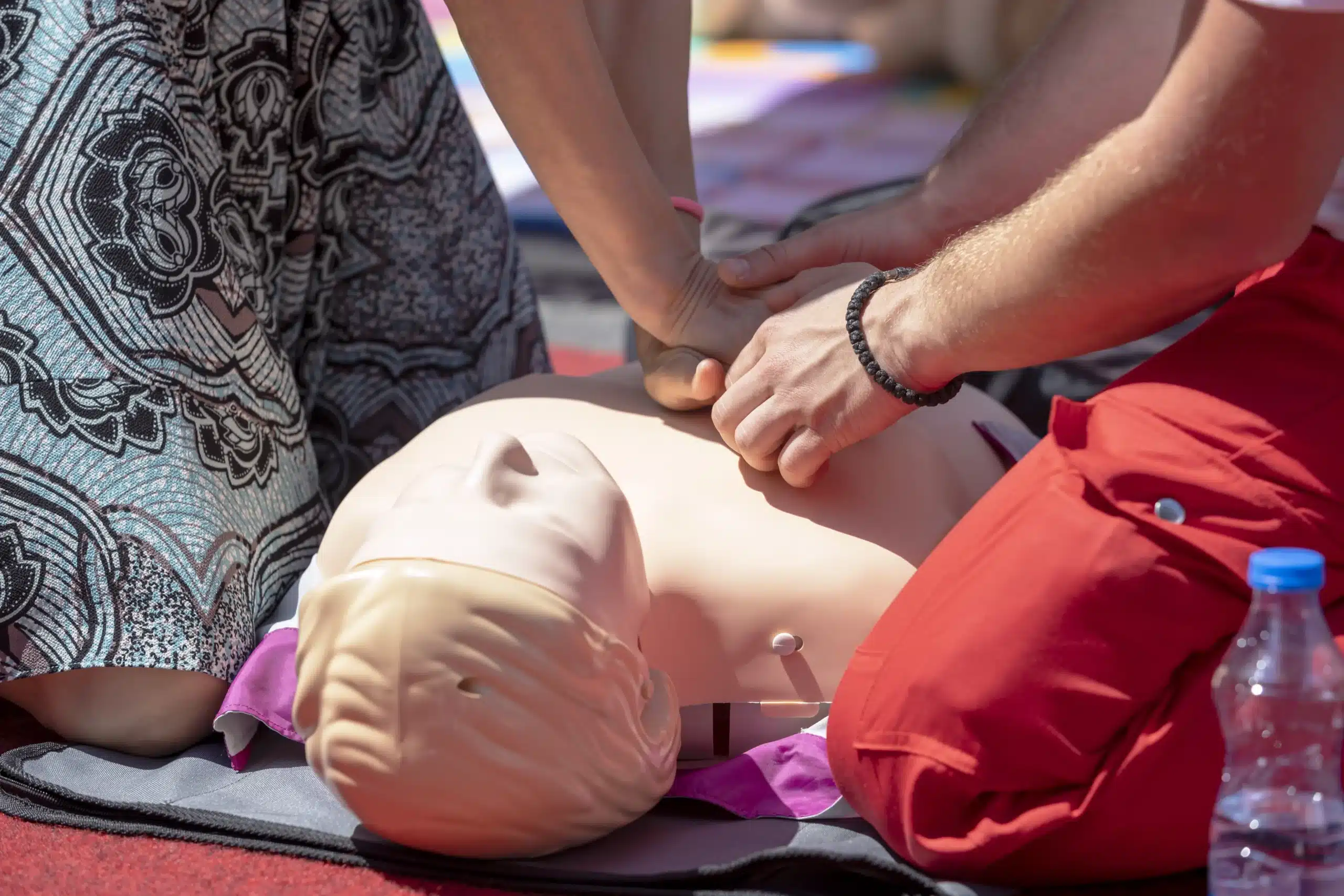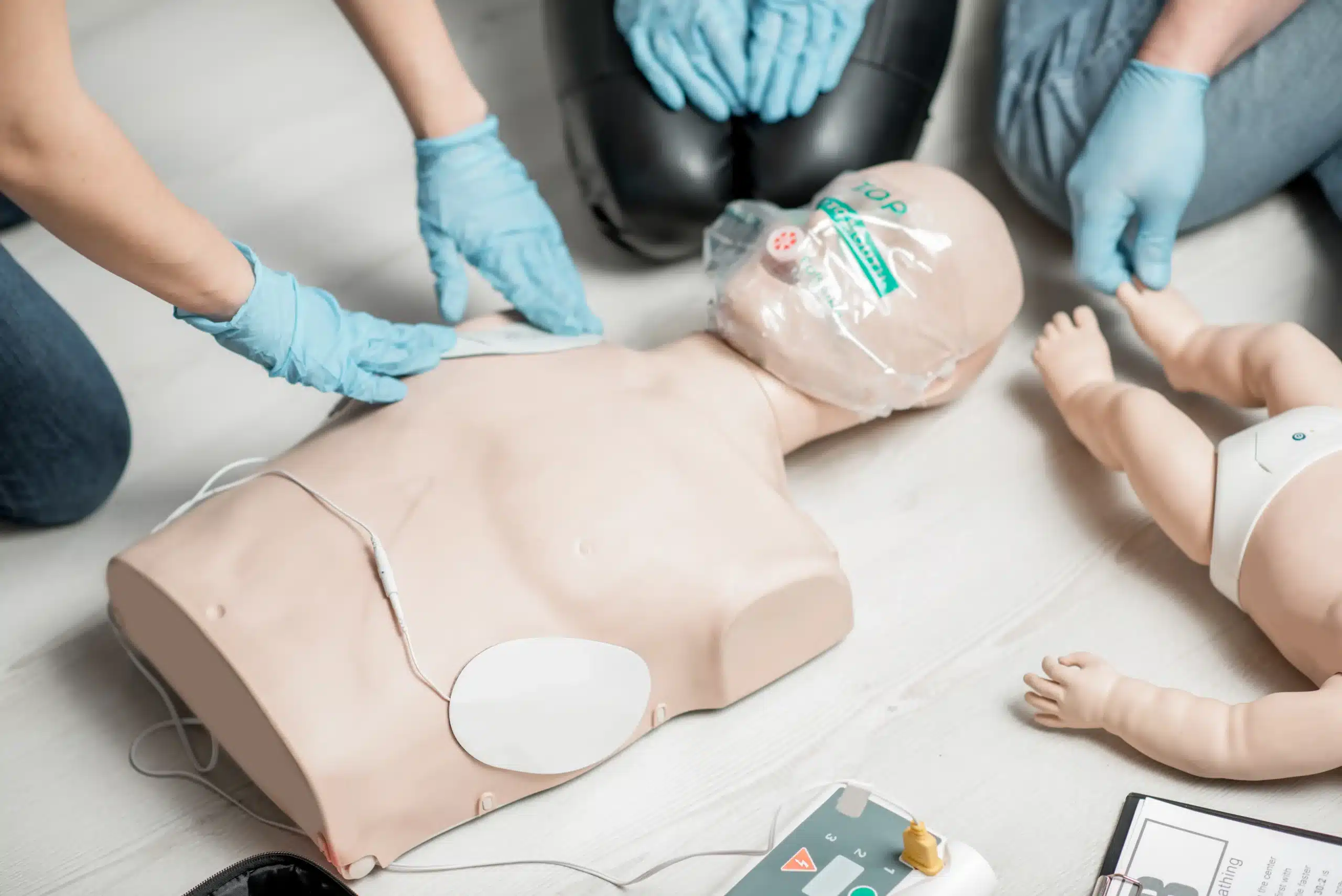Emergencies can happen anytime, anywhere. Would you know what to do? CPR training gives you the skills to respond effectively in critical situations, potentially saving a life. This comprehensive guide explores the world of CPR courses, from basic lifesaving techniques to advanced certifications like ACLS and PALS. We’ll help you find the right course for your needs, whether you’re a healthcare provider, a student, or just someone who wants to be prepared. We’ll also discuss how to find “CPR courses near me” and highlight reputable training providers in Modesto, CA, including Safety Training Seminars. Let’s get you started on your journey to becoming a confident lifesaver.
Key Takeaways
- CPR skills save lives: Learning CPR, whether basic or advanced, empowers you to help in emergencies. Find the right course type and training format for your lifestyle.
- Choose a reputable training provider: Look for certifications, qualified instructors, and positive reviews when selecting a CPR course. Consider cost and available discounts.
- Stay current with your certification: Renew your CPR certification every two years and practice regularly to maintain your skills and confidence. Utilize available resources to stay up-to-date.
What are CPR Courses & Why are They Important?
CPR courses teach lifesaving techniques to help someone experiencing cardiac arrest or breathing emergencies. These courses aren’t just for healthcare professionals—anyone can learn CPR. From basic CPR to more specialized training like ACLS (Advanced Cardiac Life Support) and PALS (Pediatric Advanced Life Support), there are courses designed for various skill levels and professions. These skills can make a real difference in critical situations.
Learning CPR empowers you to respond effectively during emergencies. CPR can significantly improve survival rates by maintaining blood flow and oxygen to the brain and other vital organs until professional medical help arrives. Think of it as a bridge between the emergency and the arrival of paramedics. The faster someone receives CPR, the better their chances of recovery. CPR and first-aid training equips you with the knowledge and confidence to provide immediate care when every second counts. If you’re looking for CPR training, consider checking out the courses offered by Safety Training Seminars. They offer a range of American Heart Association-certified courses, covering everything from the fundamentals to more advanced techniques. Understanding the cost of CPR classes and what each course entails can help you choose the right training for your needs.
CPR Course Types
Choosing the right CPR course depends on your background and goals. Here’s a rundown of the most common types:
Basic Life Support (BLS)
Basic Life Support (BLS) is essential for healthcare providers and other medical professionals. This course covers high-quality CPR for adults, children, and infants, along with AED use and relieving choking. Our BLS certification course adheres to the latest American Heart Association guidelines.
Advanced Cardiac Life Support (ACLS)
Advanced Cardiac Life Support (ACLS) builds on the foundation of BLS. Geared towards healthcare professionals, this ACLS course prepares you to handle cardiac arrest and other cardiovascular emergencies. It covers advanced topics such as airway management, pharmacology, and team dynamics during resuscitation.
Pediatric Advanced Life Support (PALS)
Pediatric Advanced Life Support (PALS) focuses on the unique needs of infants and children in emergencies. If you’re a healthcare provider working with young patients, this PALS certification is key. You’ll learn to recognize and respond to life-threatening situations, with an emphasis on early intervention.
Heartsaver CPR/AED
Heartsaver CPR/AED courses are perfect for anyone who wants to learn CPR and how to use an AED—no medical background required. This course gives you the confidence to act in emergencies, providing vital support until help arrives. It’s a great option for teachers, coaches, parents, or anyone who wants to be prepared. Ask us about group discounts for Heartsaver courses.
Find Quality CPR Training Near You
Finding the right CPR class can feel overwhelming, but focusing on a few key factors makes the process easier. Here’s what to look for when evaluating CPR training providers:
Check Certifications & Affiliations
First, confirm the training provider is certified by a nationally recognized organization like the American Heart Association (AHA). Safety Training Seminars, for example, is a woman-owned AHA Training Center offering a range of AHA courses, including BLS, ACLS, PALS, CPR, and First Aid. This affiliation ensures the training aligns with current industry standards and is widely accepted. Verify certifications and affiliations upfront to ensure your certification will be recognized by employers and other organizations.
Read Reviews & Testimonials
Take a few minutes to research what past students say. Online reviews and testimonials offer valuable insights into a training provider’s reputation and the quality of instruction. Safety Training Seminars is known for its commitment to excellent customer service and competitive pricing. Reading reviews can give you a sense of the learning environment, instructor effectiveness, and overall student experience.
Evaluate Instructor Qualifications
Look for courses that highlight instructor credentials and experience. Experienced, certified instructors create a better learning environment. Instructors should not only be experts in CPR techniques but also skilled in teaching those techniques effectively. A quality CPR course should readily provide information about instructor qualifications, giving you confidence in the training you’ll receive. Many advanced life support courses include CPR training, so understanding your instructor’s background is essential for comprehensive learning.
CPR Course Costs & Discounts
Knowing the price range for CPR certification and how to find discounts helps you budget for this important training. Let’s break down typical costs and explore ways to save.
Typical Price Ranges
CPR course costs vary depending on the certification level you need. Basic CPR classes typically range from $50 to $150. More advanced certifications, such as ACLS or PALS, or courses that include first aid training, can cost up to $200 or more. Combined CPR and first aid certification often falls between $75 and $200, usually including certification fees. Check directly with the training provider for their specific pricing.
Available Discounts & Promotions
Many CPR training providers offer various discounts and promotions. Look for early bird discounts, student discounts, or discounts for healthcare professionals. Some providers also offer seasonal promotions or discounts for registering multiple people. CPR Select is one example of a provider offering group discounts, making training more accessible.
Group Rates & Special Offers
If you’re training a group, ask about group discounts. Safety Training Seminars offers special pricing for groups. These group rates can apply to various course types, from basic CPR to more specialized certifications. Taking advantage of group discounts maximizes your training budget and equips more people with life-saving skills. Check with your chosen provider for their group size requirements and discount details. Even small groups can often qualify for a reduced rate.
Choose the Right CPR Training Format
Finding the right CPR training format depends on your learning style, schedule, and specific needs. Let’s break down the most common options: in-person, online, and blended learning. Each has its own set of advantages and disadvantages, so understanding these will help you make the best choice.
In-Person Training: Pros & Cons
In-person CPR training offers a hands-on, immersive experience. You’ll learn alongside other students and receive real-time feedback from a certified instructor. This format excels at building confidence through interactive practice and allows you to ask questions and clarify anything immediately. Plus, successfully completing an in-person class often leads to immediate certification. Safety Training Seminars offers a variety of in-person courses to choose from. The downside? In-person classes require a fixed schedule, which can be tricky if you have a busy work life or other commitments. Finding a class that aligns with your availability is key. Safety Training Seminars offers classes on weekdays and weekends to accommodate various schedules.
Online Courses: Advantages & Limitations
Online CPR courses provide incredible flexibility. You can learn at your own pace, anytime, anywhere. This self-directed approach works well for people who prefer to study independently or have limited time for traditional classes. However, online courses typically don’t offer the same level of hands-on practice as in-person training. While some online certifications are valid and accepted, particularly those accredited by organizations like the American Heart Association (AHA) or the American Red Cross, it’s crucial to verify the legitimacy of the program before enrolling. If your profession requires hands-on skills demonstration, a purely online course might not suffice. Make sure to check whether online-only CPR certifications meet your specific requirements.
Blended Learning: The Best of Both Worlds
Blended learning combines the best aspects of online and in-person training. You’ll complete the coursework online at your own speed, then attend a shorter in-person session to practice your skills and get certified. This format offers a good balance of flexibility and hands-on learning. The AHA offers several blended learning CPR courses, making it a convenient and effective option for many. This approach allows you to absorb the information at your own pace and then demonstrate your skills to a certified instructor. If you’re looking for a flexible yet thorough approach, blended learning might be the perfect fit.
What to Expect in a CPR Course
So, you’ve decided to take a CPR course—fantastic! Knowing what to expect can help you feel prepared and confident. Whether you’re taking a basic CPR course or a more advanced certification like ACLS, the core components are similar. Let’s break down the typical CPR class experience.
Course Structure & Duration
CPR courses blend theory and practical skills. Expect a combination of lectures, demonstrations, and hands-on practice. Your instructor will cover essential topics like recognizing the signs of a cardiac arrest, performing chest compressions, giving rescue breaths, and using an AED. Basic CPR certification courses typically last a few hours, while more advanced certifications might take a full day.
Hands-On Practice
Hands-on practice is at the heart of any good CPR class. You’ll work with mannequins to practice chest compressions, rescue breaths, and proper AED placement. This blended learning approach often combines online learning with in-person skills sessions. This gives you the flexibility to learn the theory at your own pace and then focus on the practical skills with a certified instructor. Don’t hesitate to ask questions—your instructor is there to guide you. The more you practice, the more confident you’ll become. If you’re training with a group, consider group discounts to save on costs.
Certification Process & Validity
Once you’ve completed the course and demonstrated competency, you’ll receive your CPR certification. This usually involves a skills test where you perform CPR on a mannequin in front of your instructor. Your certification is valid for two years, after which you’ll need a refresher course. You’ll typically receive your certification card the same day, which verifies your qualification. Understanding the overall cost and certification process will help you choose the right course. Safety Training Seminars offers a low price guarantee, ensuring quality training at an affordable price.
Prepare for Your CPR Training
Getting ready for your CPR class doesn’t require a ton of prep, but a little planning can make your training smoother. Here’s what you should know:
Required Materials & Prerequisites
Most CPR courses don’t require you to bring anything specific. Your training provider will supply the mannequins, AED trainers, and other equipment. Before signing up, double check that the course covers the skills you need, like adult, child, and infant CPR, AED training, and basic first aid. Safety Training Seminars offers comprehensive courses covering all these essential skills, so you’ll be fully prepared for a variety of emergencies. It’s always a good idea to clarify any prerequisites with your chosen provider before registering, especially for advanced courses like ACLS or PALS.
What to Wear
Comfort is key! You’ll be moving around and practicing hands-on skills, so wear loose, comfortable clothing that allows for a full range of motion. Think athletic wear or comfortable casual clothes. You’ll also be kneeling on the floor, so avoid skirts or dresses if possible.
Pre-Course Study Tips
While pre-course studying isn’t usually mandatory for basic CPR classes, familiarizing yourself with the material can boost your confidence. You can find helpful resources online, including videos and articles demonstrating CPR techniques. Brushing up on the basics beforehand can help you get the most out of your in-person training. Understanding course costs and what to expect can also help you feel more prepared. If you’re looking for affordable options, check out our low price guarantee and discounts for groups.
Top CPR Training Providers in Modesto, CA
Finding the right CPR training provider is crucial for a quality learning experience. Here’s a rundown of reputable options in Modesto, California:
Safety Training Seminars
Safety Training Seminars, a woman-owned American Heart Association (AHA) Training Center, offers various AHA-certified courses. These include BLS, ACLS, PALS, CPR, First Aid, and even EMSA certification. They’re known for their commitment to customer service and offer competitive pricing, often with discounts for groups. If you’re looking for comprehensive training and flexible scheduling, Safety Training Seminars is worth checking out. They proudly serve Modesto, Turlock, and Manteca, CA. You can explore their BLS, ACLS, and PALS course options on their website. They also offer a low price guarantee.
American Red Cross
The American Red Cross is a well-established provider of CPR training. They offer various course formats, including in-person, online, and blended learning (a combination of online coursework and in-person skills sessions). This flexibility allows you to choose the format that best fits your learning style and schedule. The Red Cross has classes available at different times throughout the week, including days, evenings, and weekends. Check the Red Cross website for CPR training options.
American Heart Association
While the AHA doesn’t directly conduct training, they authorize Training Centers like Safety Training Seminars to offer their official courses. This ensures high-quality, standardized instruction aligned with the latest AHA guidelines. If you’re looking for an AHA-certified course, make sure the provider is an official Training Center. You can often find this information on the provider’s website or by contacting them directly. Safety Training Seminars, for example, clearly notes its status as a woman-owned AHA Training Center.
Local Hospitals & Community Centers
Local hospitals and community centers often offer CPR training sessions to the public. This can be a convenient option, especially if you’re looking for a class close to home. However, the courses offered by these facilities may vary in content, certification, and cost. It’s always best to contact the specific hospital or community center directly to get details about their CPR training programs. This will help you ensure the course meets your specific needs and provides the certification you require.
Maintain Your CPR Certification
CPR skills are essential for responding to emergencies, but like any skill, they can fade over time. Staying current with your CPR certification isn’t just a good idea—it’s often a requirement for many healthcare professionals and other jobs. Regularly refreshing your knowledge and skills ensures you’re always prepared to provide effective assistance when needed.
Renewal Requirements
CPR certifications are typically valid for two years. You can easily access your certification information online through a unique URL and QR code provided by your training center. This digital format makes it simple to keep track of your credentials and demonstrate your qualifications. However, if your certification lapses, you’ll likely need to retake the full CPR course. So, mark your calendar and plan for recertification before your current certification expires.
Continuing Education Options
Even if your certification isn’t due for renewal yet, regular practice is key to maintaining your skills and confidence. The Red Cross emphasizes the importance of ongoing skill maintenance because skills can decline without practice. Fortunately, there are plenty of resources available to help you stay sharp. Online refresher materials, including interactive games and quizzes, offer a convenient way to review key concepts and techniques. Safety Training Seminars also provides various renewal options, including the RQI program specifically designed for healthcare providers. They also offer renewal courses for other certifications such as BLS, ACLS, and PALS, ensuring you can maintain all your essential credentials. Consider adding these refreshers to your routine to keep your lifesaving skills up-to-date.
Register for a CPR Course
Ready to take a CPR course? Great! This section walks you through registration and addresses common questions, making signing up easier.
Step-by-Step Registration
First, find the right course. Safety Training Seminars offers a variety of American Heart Association-certified courses, from basic CPR to more advanced techniques like BLS, ACLS, and PALS. Explore all our courses on our website. Next, check the schedule for a time that works for you. We offer convenient options, including same-day CPR certification. Finally, complete our simple registration form. We’ve streamlined the process so you can focus on learning these essential skills.
Common Questions & Concerns
We understand you might have questions. A common one is cost. Basic CPR certification typically ranges from $50 to $150, while more advanced courses, including First Aid, can cost up to $200 or more. We offer group discounts and a low-price guarantee to make training accessible. Combined CPR and First Aid certification usually costs between $75 and $200, including certification fees. Still have questions? Contact us. We’re happy to help!
Related Articles
- Why CPR is Vital for Saving Lives
- CPR Training in Modesto: Your Complete Guide – Modesto CPR Classes
- CPR Courses in Turlock: Your Complete Guide – Modesto CPR Classes
- CPR Classes in Modesto: Your Certification Guide – Modesto CPR Classes
- Group CPR Discount Classes in Modesto, CA – Modesto CPR
Frequently Asked Questions
What’s the difference between BLS and Heartsaver CPR?
BLS (Basic Life Support) is designed for healthcare providers and focuses on high-quality CPR for all ages, AED use, and choking relief. Heartsaver CPR/AED, on the other hand, is geared towards anyone wanting to learn CPR and AED use, regardless of their medical background. It provides essential lifesaving skills for everyday situations.
How long is a CPR certification valid, and how do I renew it?
CPR certifications are typically valid for two years. Renewal involves taking a refresher course before your current certification expires. Check with your certifying organization or training provider for specific renewal requirements and available courses. Many providers offer convenient online renewal options.
What if I have a busy schedule? Are there flexible CPR training options?
Absolutely! Online, blended learning, and in-person evening/weekend classes offer flexibility. Online courses let you learn at your own pace, while blended learning combines online coursework with a shorter in-person skills session. Many providers also offer in-person classes outside of typical workday hours to accommodate busy schedules.
How much do CPR classes typically cost?
Costs vary depending on the course type and training provider. Basic CPR classes usually range from $50 to $150. More advanced certifications like ACLS or PALS, or courses that include first aid, can cost more. Look for providers offering discounts, such as group rates or special promotions, to help make training more affordable.
What should I expect during a CPR class?
Expect a mix of instruction and hands-on practice. You’ll learn the theoretical aspects of CPR, including recognizing emergencies and proper techniques. A significant portion of the class involves practicing skills on mannequins, giving you the confidence to perform CPR effectively in a real-life situation. You’ll also learn how to use an AED.
